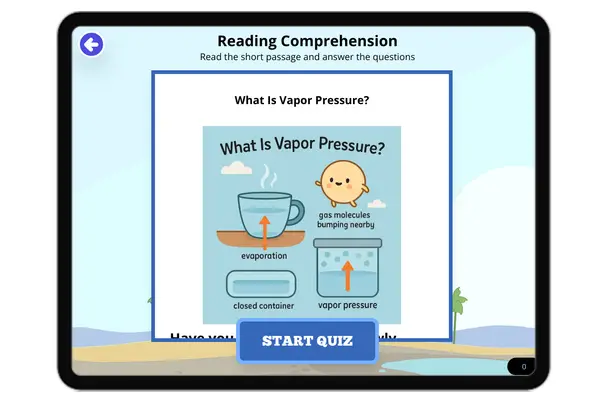How Many Valence Electrons Does Oxygen Have? — Reading Comprehension
Grades
- 5
- 6
- 7
- 8
Standards
- MS-PS1-2
- MS-PS1-4
PRINT+DIGITAL RESOURCE
This learning resource is available in interactive and printable formats. The interactive worksheet can be played online and assigned to students. The Printable PDF version can be downloaded and printed for completion by hand.
About This Reader
This NGSS-aligned science reading passage teaches middle school students about the number of valence electrons in oxygen and how these electrons determine chemical behavior. The passage explains that oxygen has 6 valence electrons in its outer shell, which is why it often forms bonds with other elements, like hydrogen. It also connects the concept to the periodic table, highlighting oxygen's place in Group 16. Students build vocabulary and comprehension skills through a clear, engaging explanation supported by real-world examples such as water. This resource supports NGSS standard MS-PS1-1 and includes multiple-choice questions to reinforce key concepts in atomic structure and chemical bonding. Ideal for classrooms or self-guided science learners.
Perfect For:
👩🏫 Teachers
- • Reading comprehension practice
- • Auto-graded assessments
- • Literacy skill development
👨👩👧👦 Parents
- • Reading practice at home
- • Comprehension improvement
- • Educational reading time
🏠 Homeschoolers
- • Reading curriculum support
- • Independent reading practice
- • Progress monitoring
Reading Features:
📖
Reading Passage
Engaging fiction or nonfiction text
❓
Comprehension Quiz
Auto-graded questions
📊
Instant Feedback
Immediate results and scoring
📄
Printable Version
Download for offline reading













